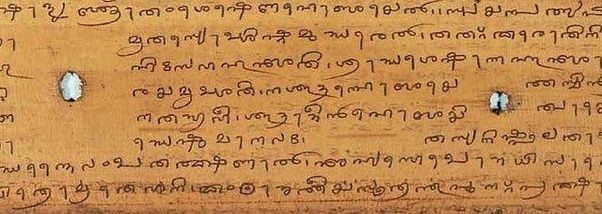
With elections round the corner, Tulu language may get its due
Karnataka govt has set up a committee to recommend that Tulu be made the state’s second official language; Tulu-speaking people have been seeking its inclusion in 8th Schedule and NEP

With Assembly elections just round the corner, the Basavaraj Bommai government in Karnataka is looking to appease the Tulu-speaking people in coastal Karnataka.
Taking a step to meet a long-pending demand of the region, Kannada and Culture Minister V Sunil Kumar has set up a committee to study and recommend making Tulu the second official language in Karnataka. The panel will be headed by Mohan Alva, Chairman of Alva’s Education Foundation, Moodabidri.
Also read: Why Kannada writer SL Bhyrappa’s Padma Bhushan turned controversial
There is a decade-long demand for adding Tulu language to the 8th Schedule of the Constitution to avail several facilities. MPs and Union ministers including M Veerappa Moily have echoed the demand. Now, BJP leaders from the coast face embarrassment when people ask why the demand is not being accepted when there is a “double engine” government — the party ruling both the Centre and the state.
Panel to elevate Tulu
To pacify the Tulu-speaking people, the BJP government has announced a committee to elevate the language. Whatever the politics, some have welcomed the decision. “This will help to lay stress for including Tulu language in the 8th Schedule of the Constitution,” said Tulu activist Mahendra Nath Saletoor.
Though Tulu-speaking people use the Kannada script, the language does have its own script. Robert Caldwell (1814-91) called Tulu “one of the most highly developed languages of the Dravidian family”. But the script did not develop for want of royal patronage.
Now, Tulu organisations are urging people learn the script. Mangalore University has started a Tulu PG course. The Tulu Peeta is helping to spread the script at the local level, said Madhava MK, a professor at Mangalore University.
Inclusion in NEP
Tulu-speaking people have been requesting governments to give it an official language status and include it in the 8th Schedule. There was also a demand to include Tulu in the new National Education Policy (NEP) in 2020.
Opinion: Who is most ‘virtuous’ of us all? An epic battle for ‘morality’ in Karnataka
The provisions relating to the 8th Schedule are found in Articles 344(1) and 351 of the Constitution. The languages listed under the Schedule are Assamese, Bengali, Gujarati, Hindi, Kannada, Kashmiri, Konkani, Malayalam, Manipuri, Marathi, Nepali, Odia, Punjabi, Sanskrit, Sindhi, Tamil, Telugu, Urdu, Bodo, Santali, Maithili and Dogri. And there is a strong demand to add the Dravidian Tulu to the list.
The backing for Tulu comes from coastal districts — Dakshina Kannada and parts of Udupi — besides parts of Kasaragod district in neighbouring Kerala. This region is informally known as Tulu Nadu. According to the 2011 census, there are 18,46,427 Tulu-speaking people in India. This number is now estimated at 20 lakh.
Tulu has a rich oral literary tradition with folk song genres such as Paddana and traditional folk theatre Yakshagana. It was introduced as a school language by the Karnataka government a few years ago. Around five to seven Tulu language films are produced every year.
8th Schedule benefits
Getting into the 8th Schedule brings in some benefits, including recognition by Sahitya Akademi, translation of Tulu literary works into other languages, option to take competitive exams in Tulu, special grants from the Central government, as well as teaching of the language in primary and high schools.
Tulu has had its impact on the cultural life of South India. Based on the report of foreign traveller Duarte Barbosa and the inscriptions of Govardhana Giri Omkara Basadi, it can be said that Tulu Nadu was limited to the north of Chandragiri (Kerala) and south of the Gangavathi (Udupi) rivers. However, the Tulu-speaking community is now confined to the coastal areas up to the Kalyanpur and Chandragiri rivers.
Also read | Karnataka: For BJP, Upper Bhadra Project could be a political windfall
Tulu has a history of thousands of years, and there are even claims that it is as ancient as Tamil or Kannada. So, Tulu should also be given linguistic representation, said BA Viveka Rai, a former guest professor of Germany’s Max Williams University and a former Vice Chancellor of Mysore University.
Tulu’s antiquity
Researchers suggest that the antiquity of the Tulu language goes back to the 9th century AD. The words “Tulu Nadu” are seen in references in some inscriptions of the 12th and 16th centuries AD. These inscriptions have been found in Brahmavara, Udupi, Kandavara and Guarantee areas in the coastal district. It is known from the studies of inscriptions of Ananthapura near Kumbale, Bajan Kudlu Shasa of Perla and Eswara Mangala near Puttur that Tulu script was used in the 14th century. Gururaja Bhatt, a Tulu researcher, discovered the first Tulu script in the surroundings of Kollankodu temple.
The Trivandrum Manuscript Department has a collection of hundreds of Tulu scripts. There is an independent script literature for Tulu language. A lot of research has been done on the subject. Stone inscriptions in Tulu script and paper manuscripts are available in abundance. There is a collection of about 15,000 Tulu scriptures in the Sri Manjunatheshwara Culture Research Foundation of Sri Kshetra Dharmasthala.
Tulu manuscripts such as Tulu Bhagavat, Tulu Mahabharata, Tulu Ramayana Kaveri, Devi Mahatme, Punyaha Vidhi, Vinayaka Havan Nidhi and Maidyagrantha Sangrasha Tulu manuscripts have been edited and brought to light. In Kannada literature, the ancient text of Tulu Nadu has its importance, said researcher Praveen A, who did his post-graduation in MA (Tulu), a course offered by Mangalore University.


